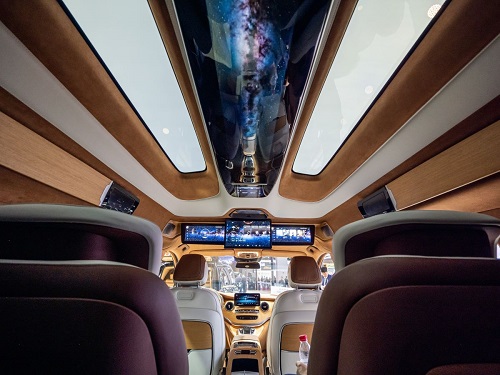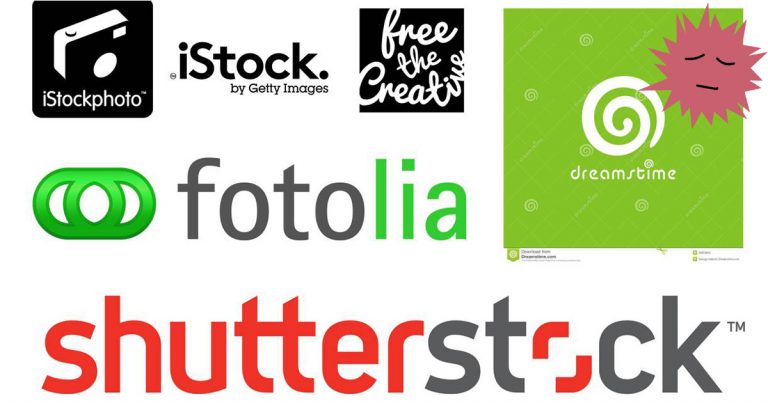how does this technology fare in 2024
We are car aggregator and naturally, we closely follow the trends in the automotive world.
We believe that car enthusiasts should stay up to date with the latest technological developments to make informed choices based on individual needs and preferences. Every innovation in the car market is something worth discussing.
One of the interesting technologies that is gradually appearing in some cars is smart glass, capable of changing its transparency and even displaying information.
Can we already say that smart glass has already become an integral part of our automotive future? Or is it still exotic, accessible only to the elite? How far has this technology caught on in some cars and what benefits can it really offer the average driver?
We will try to answer these and many other questions in our article today.
Core smart glass technologies
Polymer-dispersed liquid crystals
Polymer-dispersed liquid crystals are a class of materials that combine properties of liquid crystals and polymer matrices. They are obtained by dispersing microscopic droplets of liquid crystal in a solid or jelly-like polymer matrix. Wherein a dispersion of liquid crystals in a polymer creates a composite materialwhich can change its optical characteristics under the influence of an electric field.
The basic operating principle of the PJK is based on the ability of liquid crystals to change the orientation of their molecules under the influence of an external electric field. In the absence of a field, the liquid crystal molecules in the dispersion droplets are oriented randomly, which leads to light scattering and makes the material opaque. At When an electric field is applied, liquid crystal molecules are reoriented so that they line up in the same direction, allowing light to pass through the material, making it transparent.
To create a PJK, you first need prepare liquid crystal dispersion in polymer. This is achieved through polymerization under the influence of UV radiation, thermally induced phase separation or emulsification.
In creating PDLC, it is very important to control the size of liquid crystal droplets and their uniform distribution in the polymer matrix. The droplet size affects the voltage threshold, at which the material changes its transparency, as well as the speed of this transition.
Suspended Particle Glass or SPD
Smart glass SPD has the ability to control dimming.
The basis of SPD's work is microscopic particles, suspended in a liquid enclosed between two layers of glass or transparent polymer. These particles under the influence of an electric field are able to change their orientation inside the liquidwhich in turn affects the degree of transparency of the glass.
In the absence of an electric field, the particles are oriented randomly, which causes light passing through the glass to be scattered, causing the glass to become opaque. When voltage is applied to the glass, the particles line up, allowing light to pass through more freely and the glass becomes transparent. The transparency level can be adjusted, changing the amount of applied voltage, which allows you to adjust the degree of glass darkening over a wide range.
To create SPD glass a special liquid with suspended particles is placed between two layers of glass or transparent polymer. These layers are usually covered with a conductive transparent coating that serves as electrodes for applying the electric field. The entire structure is sealed to prevent liquid leakage and the entry of moisture and dust.
To change the transparency of SPD glass controller is used, which regulates the voltage applied to the electrodes. This allows you to instantly change the degree of glass darkening from complete transparency to significant darkness. Such a system requires minimal power to maintain a given level of dimming.
Electrochromic glasses
The icing on the cake is electrochromic glassin general, basically everything that is called “smart glass” is associated with it.
The basis of such glass is layer of electrochromic materialmore often tungsten oxide, which can change its color and degree of transparency when electrical voltage is applied. This is achieved due to the movement of lithium ions through layers of glass, changing its structure and, accordingly, optical properties.
The operating principle of electrochromic glasses is based on the phenomenon electrochromism. In short, then Electrochromism is a phenomenon that allows certain materials to change their color or degree of transparency when exposed to an applied electrical current.
The structure of electrochromic glass includes five layers, deposited on a thin glass substrate. Let's list them from outer layer to inner one:
Transparent Conductive Oxide (TCO) – the first layer, which is in direct contact with the external environment, is made of transparent conductive oxide. This material provides the necessary conductivity without compromising the transparency of the glass. Oxides such as indium tin oxide or aluminum zinc oxide are widely used as TCO due to their combination of transparency and conductivity.
Electrochromic layer – Next to TCO, the electrochromic layer contains mainly tungsten oxide, which changes color when an electrical voltage is applied. This color change allows you to control how dark the glass is.
Ionic conductor layer (or electrolyte) – the layer is located between the electrochromic and counter electrodes. It allows lithium ions (or other metals) to pass through, but not electrons, allowing the ions to move to and from the electrochromic layer when the direction of the current changes.
Counter electrode (or color compensator layer) – the counter electrode acts as a balancer for ions moving from the electrochromic layer. It can also serve as a color compensator, helping to maintain color uniformity across the entire glass surface.
Second layer of transparent conductive oxide – ensures the closure of the electrical circuit. It is identical to the first layer of TCO and ensures uniform distribution of electrical current over the entire surface of the glass.
So where does all this find application?
One of the main companies in the production of smart glass, examples of work that we will consider are Israeli Gauzy Ltd, which was founded back in 2009. Yes, yes, then there were already the first developments and the first investments in the company, including from Hyundai Motor.
The company has a modern production facility of 11,000 (!!!) square meters near Stuttgart in Germany, specifically designed to produce 1,000,000 square meters of SPD material per year for the automotive sector. It also has facilities in Frankfurt and Baden-Württemberg.
Agree, it sounds impressive.
Gauzy products include PDLC And SPDwhich we discussed above.
Mercedes-Benz
In 2017, Gauzy announced a partnership with Daimler AG, car manufacturer Mercedes-Benz. The essence of the partnership was to use technologies developed by Gauzy to create transparent displays on car windows, which made it possible to switch glass from transparent to opaque state on demand and broadcast to them High resolution videos and images.
As part of this collaboration, Gauzy introduced the industry's first film Dark RetroFit LC. When the windows became opaque, high-quality video and images were projected onto them, and when the engine started, the windows became transparent again, ready for movement. This development was the first of its kind.
Some models Mercedes S-Class SPD glass has been installed for a long time, which allows you to change the transparency of the sunroof with one click of a button – from light to dark. During daylight hours, the roof becomes almost completely transparent, creating a feeling of open sky even in cold weather. At night, light transmission is reduced to less than 1%, which reduces vehicle overheating. Mercedes called this technology Magic Sky Control.
Thanks to this partnership, Gauzy got the opportunity to participate in the accelerator StartUp AutoBahnwhere the company collaborated with major OEMs for 100 days to develop automotive technologies that would later be put into mass production by companies like Mercedes-Benz.
BMW isn't far behind either.
At the IAA International Motor Show in Munich, Gauzy presented the future of automotive display windows in collaboration with giants such as LG, BMWAnd Texas Instruments.
BMW and Gauzy presented some smart glass technologies there in the BMWi Vision Circular Showcar concept car.
With the help of glass it was possible to realize dynamic dimming headlights, which become transparent when the car is started, revealing the lighting and maintaining the car's futuristic appearance. When the SPD is turned off, the headlights are hidden, but when the car is started, the SPD becomes transparent, instantly revealing the headlights to illuminate the surrounding area.
This is a first of its kind headlight design that transforms the car's appearance from a single and sleek black panel design with hidden headlights to, well, “interactive” the car when the car starts and the light comes on.
Gauzy also stated that:
SPD glass blocks UV, IR, noise and up to 99.5% of light for customized shading while maintaining visibility of the surrounding environment. Tests show that SPD can reduce fuel consumption and increase the range of electric vehicles by up to 5.5%, reduce CO2 emissions by 4 grams per kilometer, block 95% of heat and reduce temperatures inside cars by 18ºF/10ºC.
Other examples
Gauzy also integrated PDLC into a minivan sunroof Longzhi Benz 260L MPVpresented at the 20th Shanghai International Automobile Exhibition:

This solution adds luxury and comfort to the minivan through dynamic light control, instant privacy, UV protection and improved aesthetics.
Gauzy also upgraded the rear view mirrors on 2300 London buses (and maybe more)by installing a monitoring system with cameras. The system adapts to different lighting conditions and is heated to prevent fogging and icing.

In project Thor electric camper van windows with smart glass technology from Gauzy are used, creating a comfortable space for living on the road. Smart glass allows you to create privacy on demand or enjoy unobstructed views, controlled via a touch screen or integrated with smart devices.
This solution eliminates the need to use traditional curtains; by the way, there is a video on YouTube (for convenience, a link with the required timing):
We would be interested to know whatwhat would you choose for your campsite? Curtains or glass? Or both? There will be a poll below the article!
We also observe how switchable film used in US ambulances. This film allows paramedics to have visibility outside the vehicle while still providing privacy when needed. Visiting the emergency room is often a stressful experience, and limited lighting inside the car only makes the situation worse. When the film becomes transparent, patients feel more comfortable, which alleviates their condition. Sometimes complete privacy is required, and film provides this without interfering with natural light to create a space that feels natural and inviting:

Smart glass is also used by some car dealerships for a more presentable and interesting presentation of the car, for example, Mercedes:
Smart glass is a promising area, but faces a number of problems and challenges. The main ones are high price, integration difficulties with existing automotive systems and naturally, reliability issues.
Despite current challenges, the potential of smart glass in cars promises major changes in driving comfort and safety.
Whatever the technological progress, it is important not to forget about the main thing…
Namely, that it is very important among thousands of car offers to choose one that would have no hidden problems. The car market is overloaded with offers; finding the ideal car is a very difficult task for an unprepared user.
WITH online.auto Can save not only time, but also money, through accurate estimates and in-depth real-time market analysis powered by AI.
With us it’s transparent and simple.




